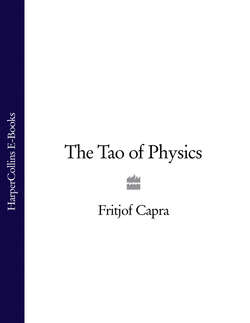Читать книгу The Tao of Physics - Fritjof Capra, Jeremy Lent, Fritjof Capra - Страница 16
Chapter 5 Hinduism
ОглавлениеFor an understanding of any of the philosophies to be described, it is important to realize that they are religious in essence. Their main aim is the direct mystical experience of reality, and since this experience is religious by nature, they are inseparable from religion. More than for any other Eastern tradition this is true for Hinduism, where the connection between philosophy and religion is particularly strong. It has been said that almost all thought in India is in a sense religious thought and Hinduism has not only influenced, throughout many centuries, India’s intellectual life, but almost completely determined her social and cultural life as well.
Hinduism cannot be called a philosophy, nor is it a well defined religion. It is, rather, a large and complex socio-religious organism consisting of innumerable sects, cults and philosophical systems and involving various rituals, ceremonies and spiritual disciplines, as well as the worship of countless gods and goddesses. The many facets of this complex and yet persistent and powerful spiritual tradition mirror the geographical, racial, linguistic and cultural complexities of India’s vast subcontinent. The manifestations of Hinduism range from highly intellectual philosophies involving conceptions of fabulous range and depth to the naïve and childlike ritual practices of the masses. If the majority of the Hindus are simple villagers who keep the popular religion alive in their daily worship, Hinduism has, on the other hand, brought forth a large number of outstanding spiritual teachers to transmit its profound insights.
The spiritual source of Hinduism lies in the Vedas, a collection of ancient scriptures written by anonymous sages, the so-called Vedic ‘seers’. There are four Vedas, the oldest of them being the Rig Veda. Written in ancient Sanskrit, the sacred language of India, the Vedas have remained the highest religious authority for most sections of Hinduism. In India, any philosophical system that does not accept the authority of the Vedas is considered to be unorthodox.
Each of these Vedas consists of several parts which were composed at different periods, probably between 1500 and 500 B.C. The oldest parts are sacred hymns and prayers. Subsequent parts deal with sacrificial rituals connected with the Vedic hymns, and the last, called the Upanishads, elaborate their philosophical and practical content. The Upanishads contain the essence of Hinduism’s spiritual message. They have guided and inspired India’s greatest minds for the last twenty-five centuries, in accordance with the advice given in their verses:
Taking as a bow the great weapon of the Upanishad, One should put upon it an arrow sharpened by meditation. Stretching it with a thought directed to the essence of That, Penetrate that Imperishable as the mark, my friend.1
The masses of the Indian people, however, have received the teachings of Hinduism not through the Upanishads, but through a large number of popular tales, collected in huge epics, which are the basis of the vast and colourful Indian mythology. One of those epics, the Mahabharata, contains India’s favourite religious text, the beautiful spiritual poem of the Bhagavad Gita. The Gita, as it is commonly called, is a dialogue between the god Krishna and the warrior Arjuna who is in great despair, being forced to combat his own kinsmen in the great family war which forms the main story of the Mahabharata. Krishna, disguised as Arjuna’s charioteer, drives the chariot right between the two armies and in this dramatic setting of the battlefield he starts to reveal to Arjuna the most profound truths of Hinduism. As the god speaks, the realistic background of the war between the two families soon fades away and it becomes clear that the battle of Arjuna is the spiritual battle of human nature, the battle of the warrior in search of enlightenment. Krishna himself advises Arjuna:
Kill therefore with the sword of wisdom the doubt born of ignorance that lies in thy heart. Be one in self-harmony, in Yoga, and arise, great warrior, arise.2
The basis of Krishna’s spiritual instruction, as of all Hinduism, is the idea that the multitude of things and events around us are but different manifestations of the same ultimate reality. This reality, called Brahman, is the unifying concept which gives Hinduism its essentially monistic character in spite of the worship of numerous gods and goddesses.
Brahman, the ultimate reality, is understood as the ‘soul’, or inner essence, of all things. It is infinite and beyond all concepts; it cannot be comprehended by the intellect, nor can it be adequately described in words: ‘Brahman, beginning-less, supreme: beyond what is and beyond what is not.’3
